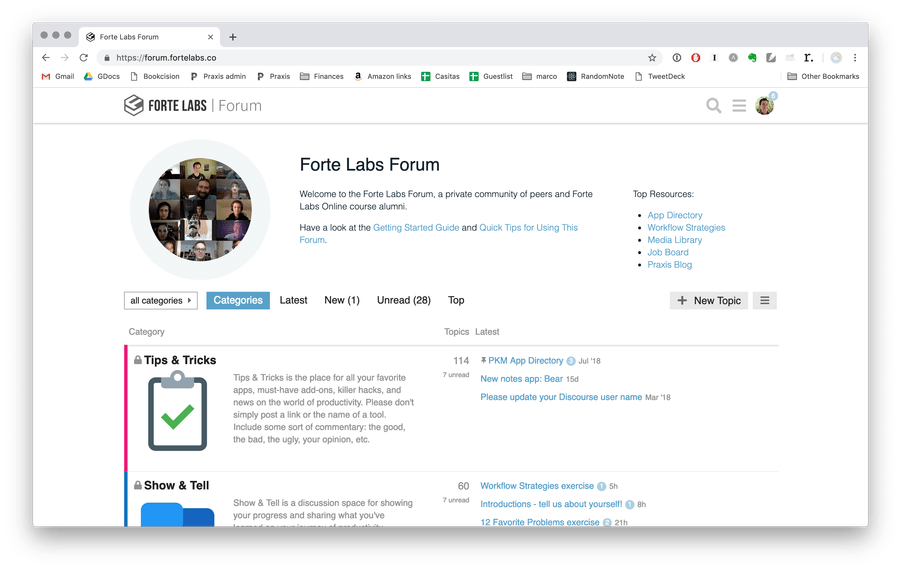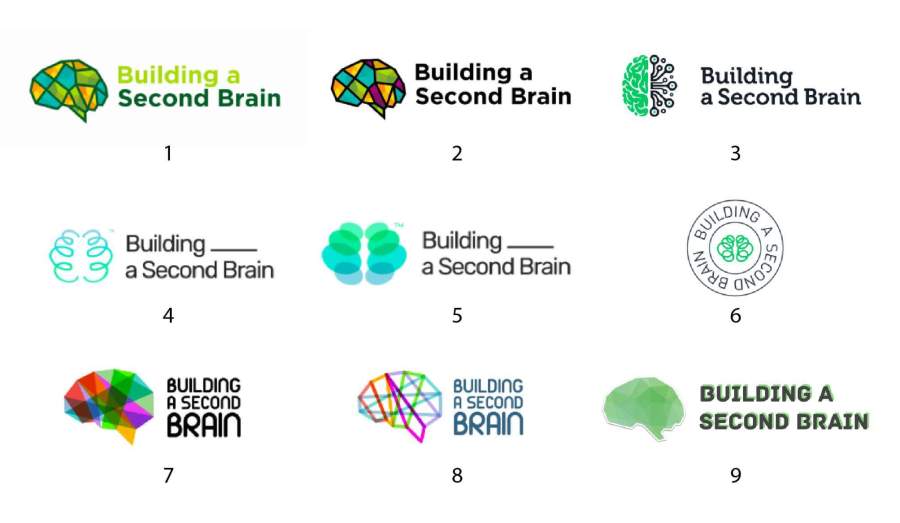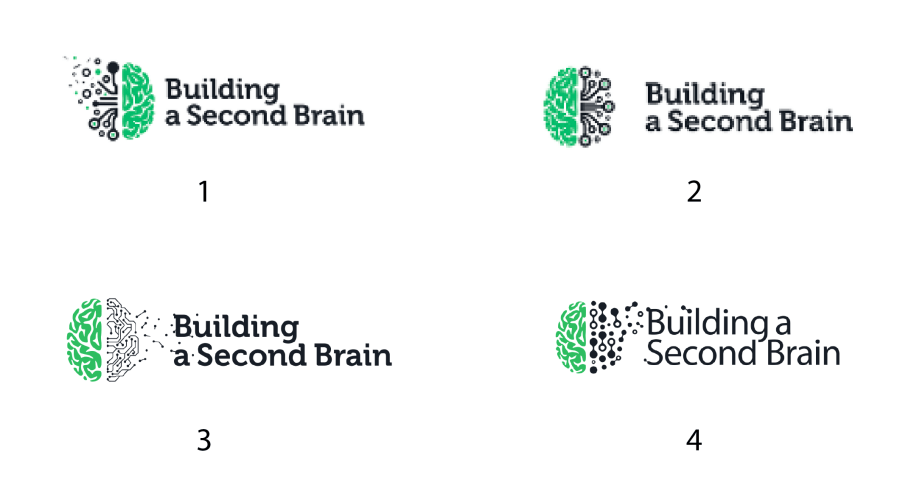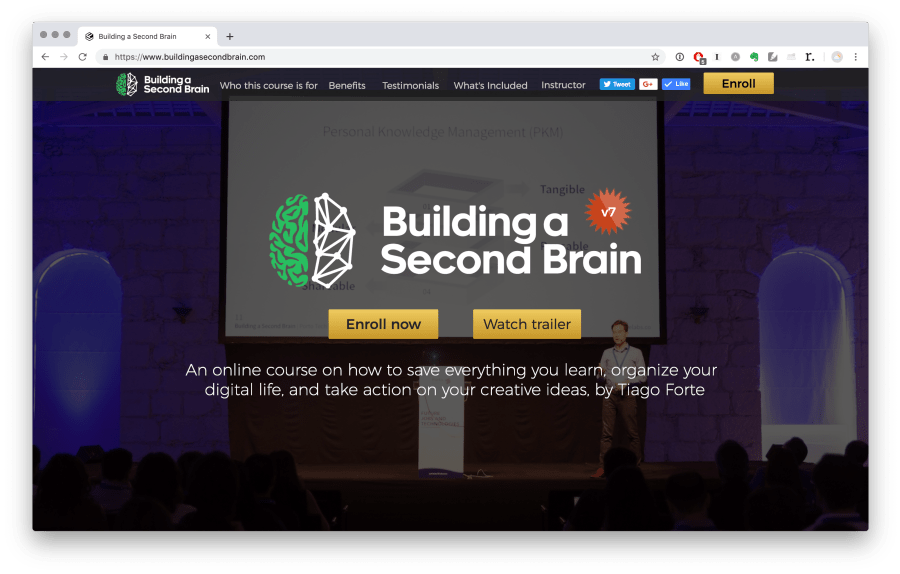
I advise everyone I know to create an online course. Everyone has something to say. Everyone has valuable knowledge that others could benefit from.
I believe that in 10 years online courses will be like websites today – everyone who works online will have at least one. And without one, you will be all but invisible.
What an “online course” looks like will probably radically change by then. It may look like a newsletter subscription, a private social media feed, an augmented reality lens, a swarm of conversational chatbots, or a virtual reality holodeck where someone can “walk through” your mind.
But whatever form it takes, every knowledge worker in the future will need some way for others to access their knowledge without also taking their time. As long as you only sell what you know by the hour, you’ll always be chained to a desk, whether you have a traditional job or are self-employed. You’ll never gain the freedom and flexibility that working with knowledge makes possible.
Creating an online course, or other educational content in some form, is really about setting your knowledge free. Allowing it to have a life of its own, to stand on its own as something inherently valuable. And by setting your knowledge free, you will also be set free to spend your life as you want.
In this case study, I want to show you how profitable an online course can be today. It’s certainly not easy, but it is eminently feasible. In a follow-up post, I’ll explain my strategy for making my online course the centerpiece of an entire ecosystem of products, services, experiences, and content.
Financial Results
I’ll start with the money, since that funds everything else.
Revenue
My online course Building a Second Brain (BASB) has been available for sale for just over 2 years, with 712 purchases in that time. The price has ranged from $400 to $700 for the “standard edition,” and between $600 to $1,200 for the “premium edition.”
Here are the details:
- The version numbers in the left-hand column refer to the iterations of the course I’ve released every 3-6 months. They include new content I’ve added, reordering the lessons, adding new forms of support, or other changes
- Gross earnings is total revenue, taking into account credit card and transaction fees
- Affiliates are people who have referred others to purchase the course, and who I paid a commission to
- Refunds are given within 30 days of purchase
These numbers do not include the other two online courses I offer on the Teachable platform, which together have generated about an additional $45,000 in gross earnings over the past three years.
Expenses
These are the expenses associated with delivering the BASB course over two years:
Course manager – $13,124
Starting with version 3.0, I hired a part-time contractor as a Course Manager. Their responsibilities included answering student questions, troubleshooting IT issues, issuing invoices and refunds, and in some cases creating new instructional material or leading live calls.
I typically paid about $25 per hour, and the time commitment varied based on whether it was a live cohort (taking place over 4-5 weeks via live Zoom calls) or self-paced (pre-recorded videos that students watched at their own pace). The live cohorts were much more demanding and required near full-time attention and quick response times, while the self-paced students were spread out over a longer period of time and the work could be batch-processed.
I’ve facilitated both live cohorts and self-paced students with and without a course manager helping me, and it is completely possible to do it on your own. They do take care of a lot of the lower-level admin work, can respond more quickly to messages from students, and provide a valuable sounding board for decisions.
My full recommendations for working with an assistant remotely can be found in A Productivity Expert’s Guide to Working with a Virtual Assistant.
IT support – $9,744
I worked with another independent contractor (who originally was the Course Manager, and later shifted their focus) who supported all the technology aspects of the course. This included:
- Setting up integrations between different platforms (such as syncing course participants with a Mailchimp list)
- Automated predictable, frequent tasks (such as automatically giving students access to the online forum)
- Responded to customer complaints and requests and documented these responses for future use
- Researched and investigated avenues for marketing the course (such as taking notes on a marketing webinar and discussing them with me)
- Investigated and helped carry out IT solutions to recurring challenges (such as moving the blog to WordPress)
- Created proof-of-concept software solutions (such as the first version of RandomNote)
Marketing agency – $8,418
Starting at the beginning of 2018, I hired a small social media marketing agency to help with the marketing of the course. We created a 1-minute “trailer” video; redesigned the BASB website to be shorter, simpler, and more accessible; produced a series of 1-page “tipsheets” to use as incentives for signing up to the email list; and refined our messaging to reach a more mainstream audience.
Although this was a productive collaboration, trying to outsource the marketing of an online course is not something I’d recommend. Marketing is not a specialized, cut-and-paste activity that you can just hand off to someone. It requires constant, in-depth experimentation and fine-tuning to build a mental model of who your audience is and what they are looking for. As a solopreneur, you don’t have a huge budget to throw at your market. You have to be creative, adaptable, and willing to try anything.
Coaches – $2,500
For version 4.0, I decided to offer a “coaching edition” for the live course. I charged $1,200, and about 10 out of 50 participants opted in. I hired 5 previous graduates of the course to serve as coaches, and paid them $500 each to coach two participants through the course.
This experiment succeeded in some ways, and not in others. Most of the participants were happy with the experience, and a few of them had spectacular testimonials. But others didn’t have a great experience. Not everyone is a natural coach, and I think for this to be sustainable I would need to provide a lot more training and support for coaches.
Videographer – $2,500
I hired a friend to film and edit the 1-minute trailer video mentioned above. He was early in his career, thus the unusually low price. This should give you an idea of how expensive quality video production costs. If you can do even basic filming and editing yourself, you can save a tremendous amount of money and still capture many of the benefits.
Online forum (Discourse) – $1,650
Everyone who purchases the BASB course automatically gets access to a dedicated, exclusive online forum. It uses the Discourse open-source software, created by Stack Overflow founder Jeff Atwood.
Discourse provides everything you might need for an effective online community: posts with commenting, notifications, upvoting, a trust and reputation system, user profiles, mobile device access, text formatting, moderation, badges, security, admin controls, and embedded links, among others. You can also customize the software – we added a plugin that allows highlighting, which is part of the Progressive Summarization method I teach in the course.
For the first few months I paid $100 per month for them to take care of the hosting and maintenance. In retrospect, this was a good deal. But I thought it was too expensive, and decided to move to the self-hosted option. After trying to complete the migration myself and suffering through a near-catastrophic data loss, I decided to pay an IT administrator to manage my self-hosted forum. He charges $50 per month, and most of the time is just doing simple upgrades. But having him available and keeping an eye on things is worth the cost. The hosting itself costs only $10 per month with Digital Ocean.
Graphic design (99designs) – $1,600
I’ve used 99designs.com several times in the past. They allow you to post “design competitions” in which multiple designers submit designs, and you move them through several rounds of feedback before picking a winner. You only pay if you select a winner, and then they send you the original design files.
I can’t recommend 99Designs unequivocally. It is a significant amount of money to spend, and requires a strong vision for what you’re looking for. Unless you pay for the top tiers, you are receiving submissions mostly from overseas designers, who need very clear, detailed instructions. You have to serve as your own creative director. Don’t expect them to come up with something brilliant on their own.
Here’s a sample of initial design submissions I received for the BASB logo:
Here was the final round with the final designer I picked:
And the one I ended up with after several rounds of feedback:
If you don’t have a good eye and strong creative vision, I’d recommend creating a logo yourself, using a text-only logo, or downloading a modifiable template from a website like Creative Market or Envato.
I also wouldn’t recommend hiring a designer for bigger design assets like a website or slides, at least not in the beginning. These assets will change so often, and can be repurposed for so many different uses, that it’s worth using designs that you can modify yourself, even if they are at a lower level of quality. Again, I recommend the marketplace websites above for excellent templates that anyone can modify.
Course platform (Teachable) – $1,565
Teachable is the main platform where the course is delivered. It does basically everything you need to host, sell, and deliver an online course:
- Provides basic webpages for a simple blog, sales page, and checkout page
- Handles payments, student registration, refunds, taxes, and affiliate fees
- Hosting videos, text, links, files, and quizzes in a linear curriculum format
- Tracks individual student progress, provides statistics on overall course completion, and issues completion certificates
- Advanced customization options for developers
Teachable is a “white-label” online course platform, which means that it gives you all the tools and infrastructure, but marketing is your responsibility. In contrast, platforms like Skillshare and Udemy provide more marketing support, such as running promotions and actively driving people to their site, but at the cost of you having to give up pricing control. They are good options when starting out, because they will expose new audiences to your course, but in the long run, you can’t build a business when your course is being constantly discounted by 70-90%.
For this reason, Teachable provides a lot of education around building, marketing, and selling your course. They have their own online courses, ebooks, live trainings, and an annual summit chock full of guides, templates, instructions, examples, case studies, and other resources for instructors. I’ve found them to be very helpful, especially since everything they recommend is already pre-vetted for the platform you’re using.
Landing page (Unbounce) –$1,342
One of the first and most important assets needed for a profitable online course is a landing page. This is the one gateway that everyone interested in your course passes through, so it’s your chance to get everyone educated and on the same page about what you’re offering.
Mine is located at www.buildingasecondbrain.com. I don’t know how to code, so I used a drag-and-drop website builder called Unbounce. Although I’ve been happy with the performance of the builder and the site, Unbounce is one of the older landing page creation tools, and their legacy system is becoming noticeably outdated. If I was starting today, I would look at lighter, more modern options such as Carrd.
I recommend lavishing attention on this page, as it is the single most important point of contact with potential and actual customers. My page has received more than 56,000 visitors since January 2017, almost 100% of which is organic traffic clicking on links in blog posts, online forums, social media, or emails, as well as search.
Facebook ads – $832
I’ve done several experiments with Facebook ads. The first was about 5 years ago when I wanted to know more about the audience for my first course, Get Stuff Done Like a Boss. I found some interesting insights, such as that the audience who found me via Skillshare was predominantly female and middle-aged, which I hadn’t expected.
In more recent years, I did some small experiments to see if I could drive traffic to my courses. None of these experiments had the consistency or longevity to draw any firm conclusions. So the only conclusion I’ve drawn is that using online ads effectively requires long-term dedication.
It’s not as simple as putting money in and getting sales out, nor can you really pay someone to do this for you (both of which I’ve tried). Ad platforms from Facebook and Google are so complex and constantly changing, that it takes real subject matter expertise and constant re-education to leverage them effectively.
My current approach is to focus on content marketing and organic traffic, which I find easy and rewarding, and brings me highly qualified and engaged customers. Someday perhaps I’ll reach the scale where I can afford to invest in paid marketing in a serious way. In the meantime, I’ve been encouraged by other course creators like Paul Jarvis who has built a sizeable business without using ads at all.
Video-conferencing (Zoom) – $756
One of the key breakthroughs that led me to create BASB was the realization that I could combine the best of self-paced online courses and in-person live trainings. I had focused on corporate trainings for a year, and found it rewarding (both personally and financially), but the intensity and travel were exhausting. And then I dedicated myself to completely self-paced courses for a year, and found it much better suited to my temperament, but seriously lacking in human interaction.
Toward the end of the 2016 I took Venkatesh Rao’s course on longform blogging, The Art of Longform, and saw how he combined pre-produced assets (such as slides and prompts), with live delivery and interaction using the Zoom video-conference app. I was hooked, and decided that copying this format would allow me to have everything I wanted.
Zoom is an excellent video-conference service that has risen meteorically over the last few years. It has taken the place of Skype as the default video-calling tool in the tech world, offering better video and audio quality, better stability, and neat options like breakout rooms and on-screen annotation. The recording feature works very well, and most of my course lectures and discussion sessions are just recorded Zoom sessions. You can set it to automatically record so you don’t have to remember to turn it on, including options for local and cloud recording.
Other features that make Zoom indispensable for me include:
- Required registration, so I can see who signed up for a given session and email them afterward
- Pre-written polls, so I can survey the attendees with the press of a button, and then reveal the results to them with another click
- Multiple screen-sharing options (entire screen, a specific program or window, or a mobile device)
- Breakout rooms that allow me to automatically separate attendees into “virtual discussion groups,” and visit the ones I want
- Public chat thread where attendees can ask questions, communicate with each other, and share resources
Video-editing (Camtasia) – $169
Creating an online course requires basic video editing capabilities. Even simple things like cropping the beginning and ending of a recorded Zoom call, recording a slide presentation with voiceover narration, or making a walkthrough video of a specific program require video editing.
Although Camtasia is technically just a screen capture program, designed for on-screen tutorials and walkthroughs, it can also handle live video. It is similar to Apple’s iMovie, but more stable and better-supported in my experience. It is very easy to learn and to use, and I recommend it for course creation.
Social media automation (Buffer) – $70
During course launches, when time is limited, it is very helpful to be able to batch process social media updates. Instead of somehow remembering to log on every few hours and think up a post, you can pre-plan an entire sequence of posts with testimonials, screenshots, selling points, and other copy and schedule them to go out at certain days and times.
Buffer even has features for auto-scheduling these posts at times of maximum engagement. The other nice thing is that you can turn the paid version on and off as you need it, which is why this cost is so low.
Profitability
The expenses listed above come out to $45,920 over two years. It’s a significant sum, but on earnings of $256,839 that comes out to a profit of $210,919, at an 82% gross margin. Pretty good by any measure, especially considering that this is only one course, and courses are only one source of income for a full-stack freelancer.
Online courses can be a highly profitable, extremely rewarding business for anyone seeking to teach and help others, while maximizing their freedom and fulfillment.
In the next post, I’ll explain my strategy for making it happen.
The Only Subscription
You Need to
Stay at the
Edge of AI
The essential toolkit for those shaping the future
"This might be the best value you
can get from an AI subscription."
- Jay S.
Join 100,000+ leaders, builders, and innovators

Email address
Already have an account? Sign in
What is included in a subscription?
Daily insights from AI pioneers + early access to powerful AI tools













Comments
Don't have an account? Sign up!